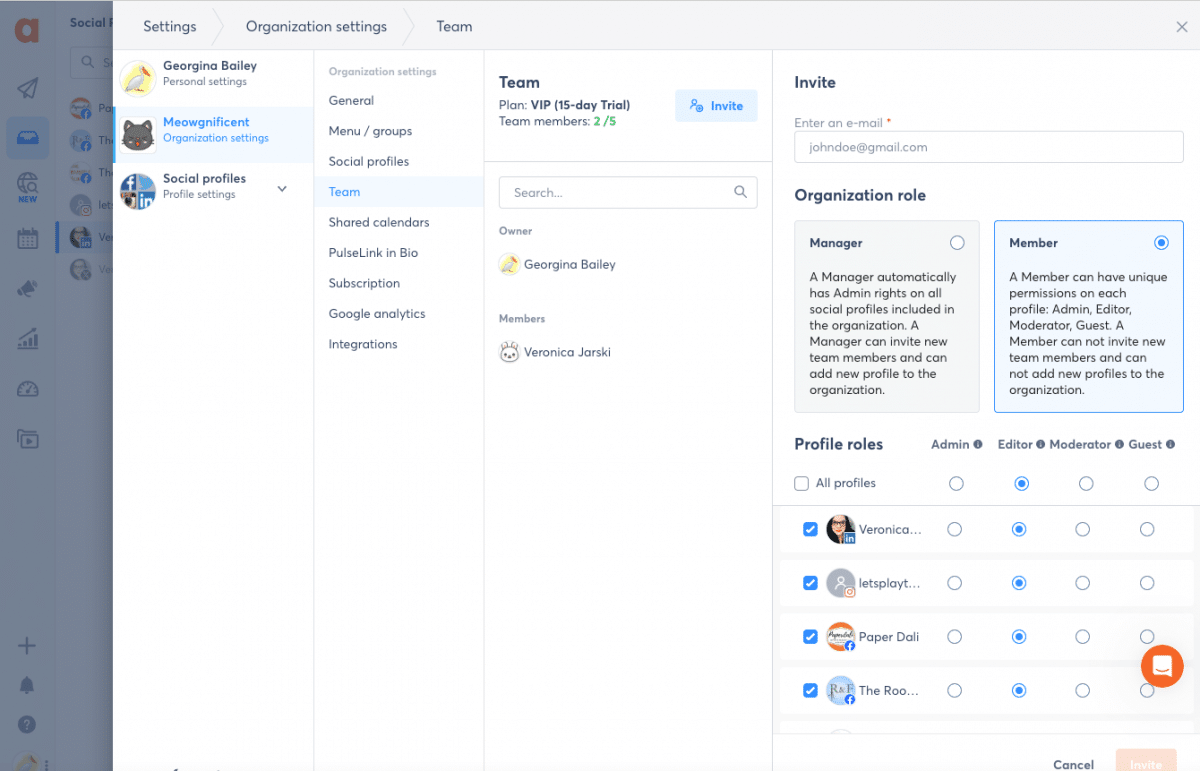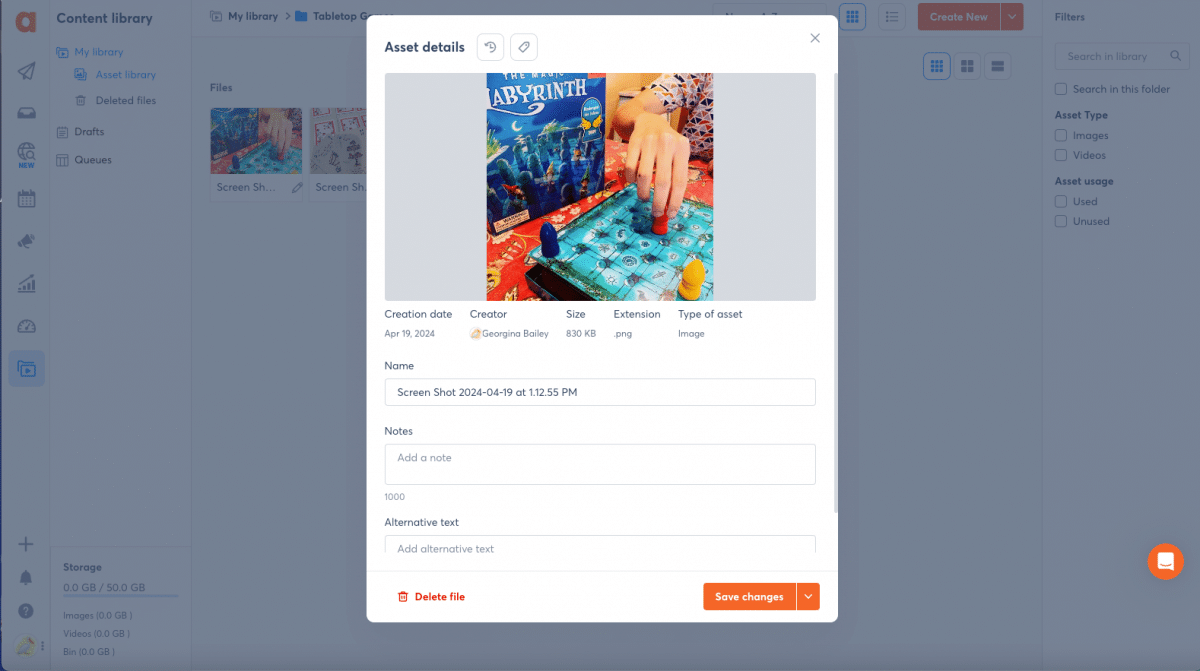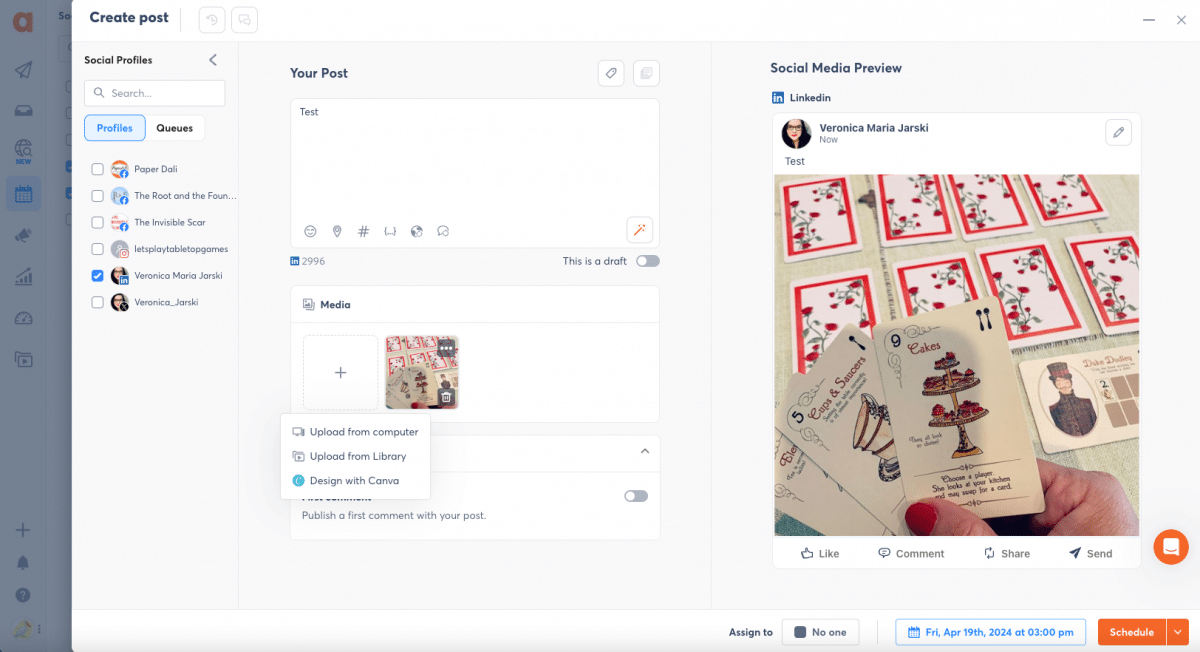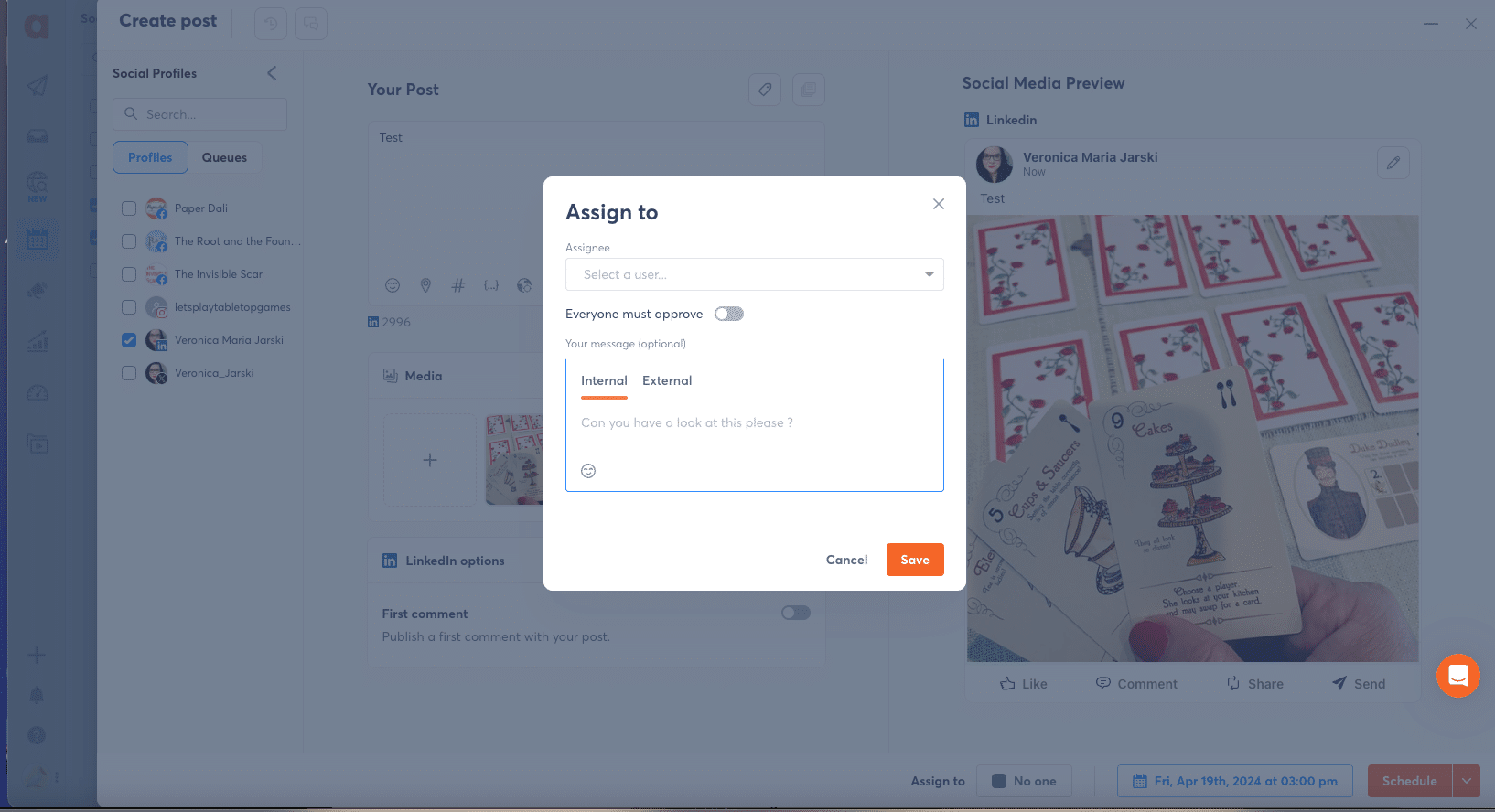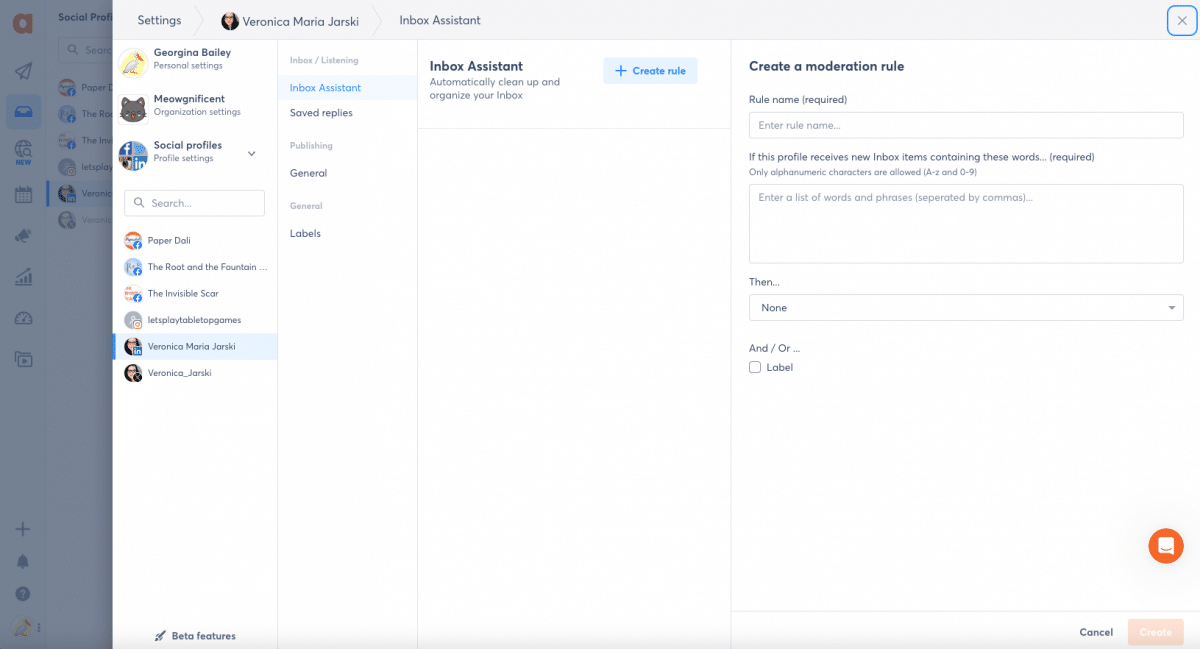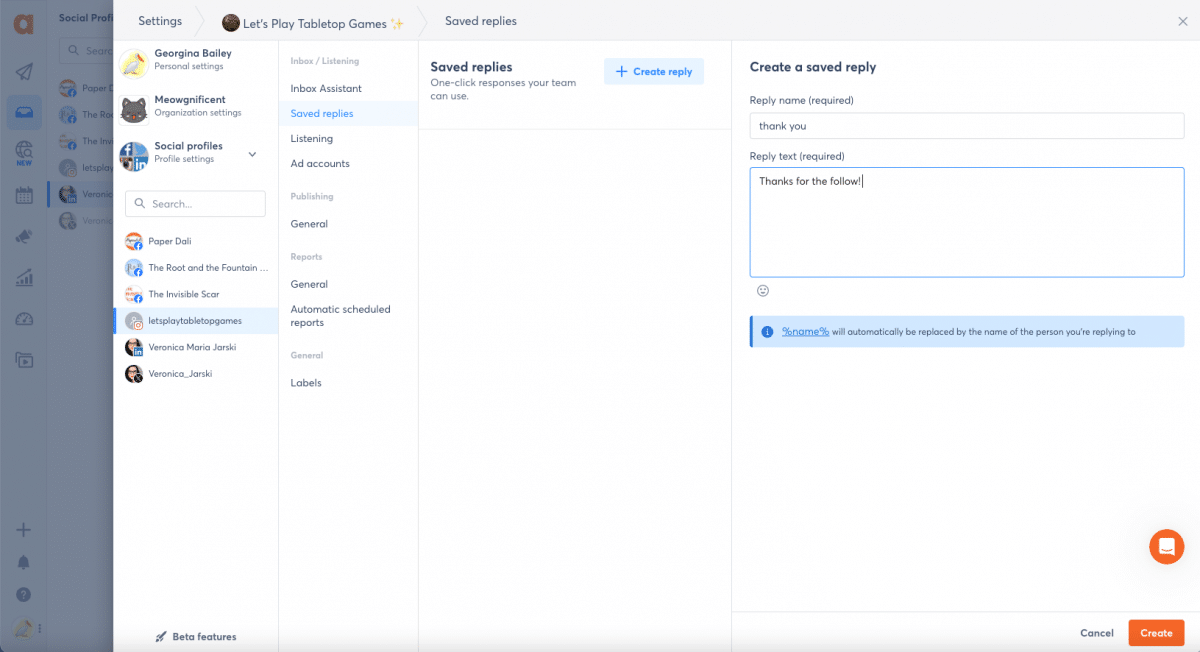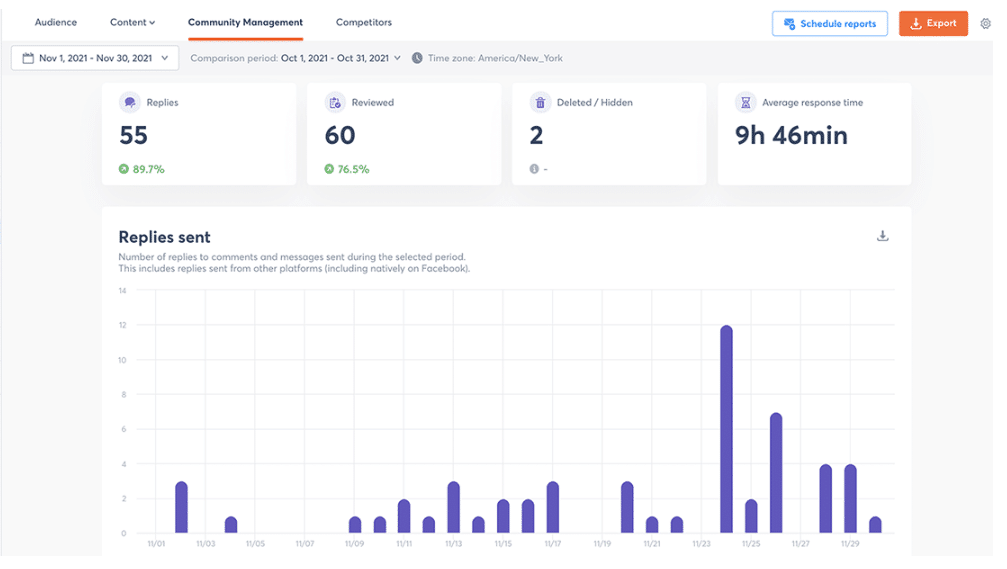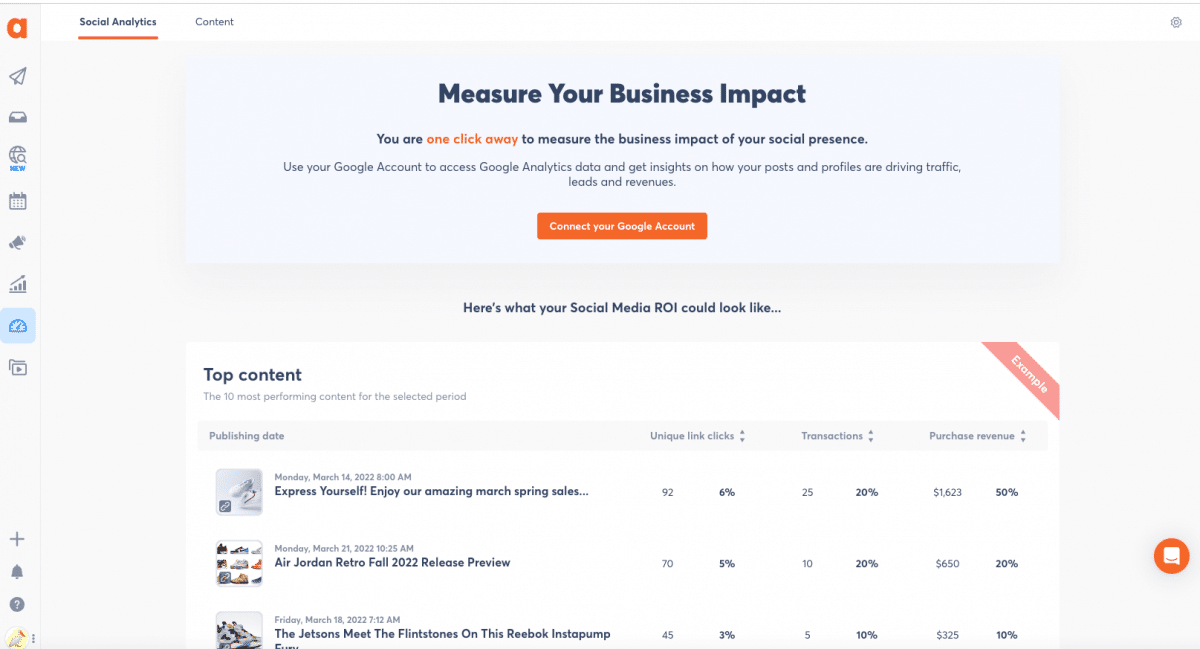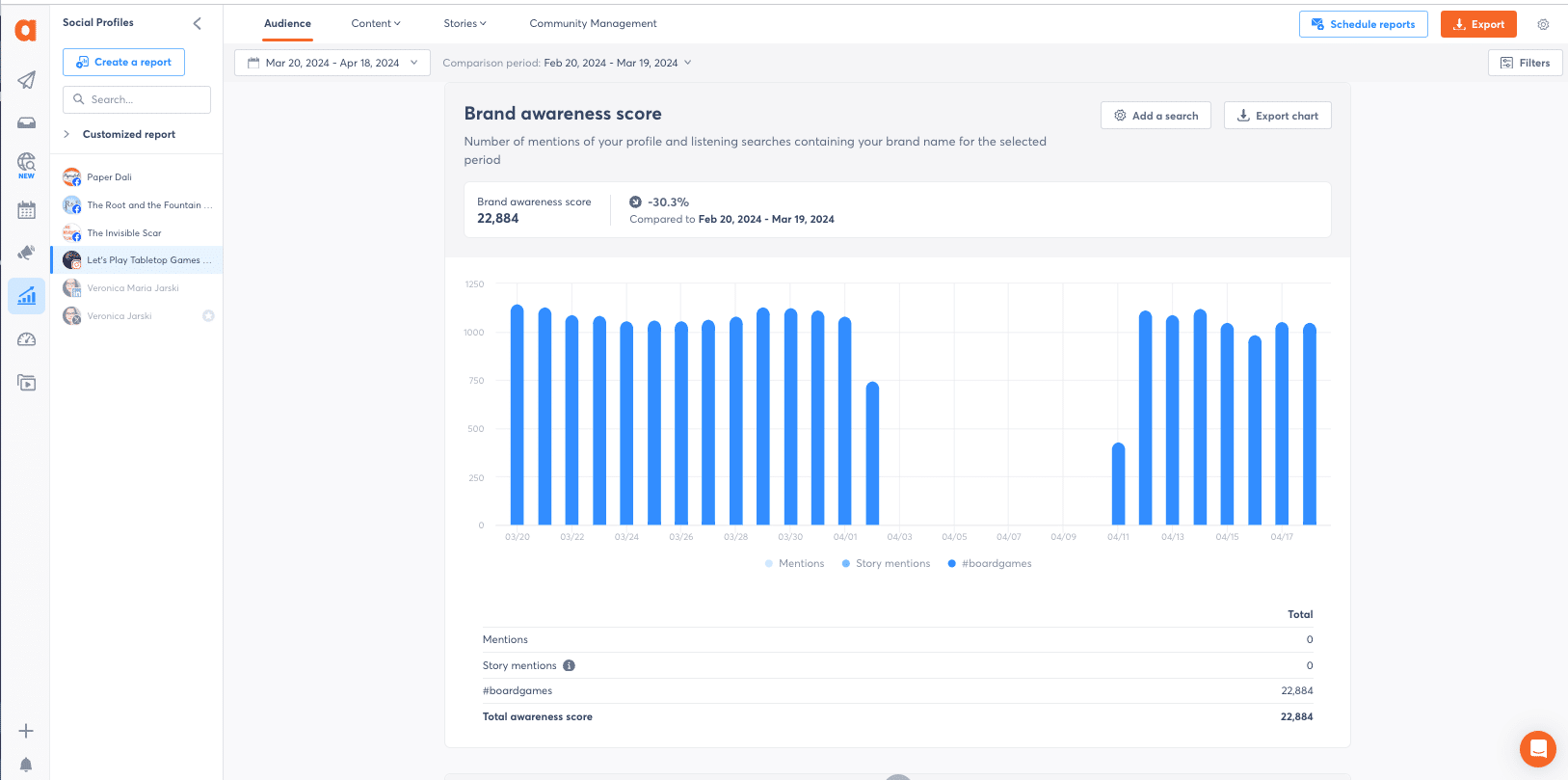For most social media agencies, learning how to deal with difficult clients is part of the job. If you’re fortunate, you can identify red flags and opt out of working with particularly challenging clients before they become problematic. But even the best clients have moments of expecting impossible results or making unreasonable demands at the last minute.
As a social media manager, how can you handle working with people who communicate inconsistently, ask for too much, or micromanage your to-do list?
Let’s look at how to deal with difficult clients effectively—from taking key steps before working together to adopting tools and workflows that help you navigate tough situations more smoothly. You can also sign up for a free trial of Agorapulse and start making agency life easier for yourself right away.
1. Clarify the Scope With Difficult Clients
Has a client ever asked you to do extra work or manage tasks that you haven’t discussed previously? If so, you’ve encountered a common issue among difficult clients: scope creep. Essentially, it refers to clients asking for things outside of the scope of work outlined in your agreement.
To avoid scope creep and the clients who take advantage of it, clarify what your social media services include before you start working together.
Be as specific as possible, including the amount of content you’ll produce or how quickly you’ll respond to engagement.
Give agency clients the opportunity to ask for more, so you can add it to the scope (and get paid for it!) from the beginning. If certain tasks are your clients’ responsibilities, clarify that in your agreement as well.
No matter how clear you are, you may still get pushback. In some cases, you can give clients the benefit of the doubt. Some clients may have forgotten the details of your agreement, and some may be new to working with an agency.
But in other cases, clients actually want to get more than what they’re paying you to do. They may push the limits of your agreement once—or repeatedly.
In either case, respond the same way you always should: Be professional and polite but firm.
Briefly explain to clients how their request differs from your agreement:
- Did they ask for too many posts per week?
- Do they want you to manage a social channel that isn’t in the scope?
- Did they tack on design, advertising, and other extra duties?
If you can provide the service they need, quote them a price and be prepared to send them an updated agreement. If you can’t, be clear about that and recommend them to another marketer or agency if possible.
By establishing a clear scope and actively managing it throughout the project, you can effectively address any challenges that arise and maintain a healthy working relationship with your clients.
2. Set Clear Expectations
You can prevent having to deal with difficult clients by setting clear expectations with your clients from the get go. When you start working with new clients, remember that they may have completely different workflows or communication styles than your agency does. Take time at the very beginning of your relationship to explain how your agency works and what your clients can expect from your team.
Tips for setting expectations with clients
It’s helpful to clarify the following for difficult clients:
- What methods you use to communicate. Do you set up separate Slack channels for each client? Are you open to calls or texts? Is email the only way to reach your team?
- Who’s your clients’ point of contact. Don’t make them guess. Tell them who to contact—and if it’s a team, carbon copy (cc) everyone consistently.
- How quickly you typically respond. Should clients expect to hear back from you on the same day? Do you have a 24- or 48-hour reply policy?
- When they can expect to receive materials from you. Do you plan every social media campaign a minimum of one month in advance? Do you send over weekly publishing schedules on a certain day each week?
- When you need responses or feedback. If you need client input or approval to do your job, give them a deadline. If they routinely miss it, start planning further out to avoid issues.
Be proactive in sharing updates with your clients. Instead of waiting for your clients to ask for updates, take the initiative to provide regular status updates and progress reports. Proactive communication builds trust and reassures clients that their projects are in capable hands.
By setting clear expectations for communication, you can establish a strong foundation for collaboration and effectively deal with difficult clients.
3. Use a Powerful Social Media Management Tool
When you have difficult clients, you might come to expect communication lapses and issues with accomplishing everyday tasks. Do you need yet another verification code to log in to Instagram? Do you need a client to give Facebook Page access to a new team member? You might be waiting for a while.
Rather than relying on clients to assist with administrative tasks, use a social media management tool to manage all your accounts and permissions seamlessly. With Agorapulse, you can add 40 or more social media profiles to a single dashboard.
That means you can manage multiple client Instagram, Facebook, Twitter, LinkedIn, YouTube, and Google Business Profiles simultaneously from one tool. There’s no need to sign in and out repeatedly, so you don’t have to worry about triggering security codes constantly.
When you need to give another team member access to a client’s account, you can easily do it in Agorapulse. Invite your colleague to join your Agorapulse account and configure their access level for each account individually.
In Agorapulse, permission levels range from admin to read-only. That means you can allow team members to manage clients’ social profiles or view posts and engagement—and you can adjust their permissions at any time.
4. Be More Organized Than Your Difficult Clients Are
To effectively manage difficult clients, it’s crucial to stay organized and stay one step ahead.
Here are some organizational tips:
- Maintain a centralized project management system: Use project management tools to keep track of tasks, deadlines, and client-specific details. This ensures that nothing falls through the cracks and helps you prioritize your work.
- Develop a client-specific knowledge base: Create a centralized repository of client information, including preferences, past discussions, and project details. Having quick access to this knowledge allows you to provide a personalized experience and avoid repeated explanations.
- Adopt a task management approach: Break down your work into manageable tasks and prioritize them based on urgency and client requirements. Regularly review and update your task list to ensure you’re staying on top of deadlines. Setting high-level goals for both your agency and your clients will help you prioritize your tasks and keep your team on track.
- Proactively address potential issues: Anticipate potential challenges and address them before they become bigger problems. By identifying and addressing issues early on, you can maintain a proactive approach and provide your clients with solutions.
- Keep your creative assets organized: If your most difficult clients tend to be disorganized, they might expect your agency to keep track of every aspect of creative and campaign planning. Meeting this expectation can be challenging if your team doesn’t have a process for storing, sharing, or organizing social media content.
Set up an Asset Library
Agorapulse’s built-in social media Asset Library makes it much easier to organize images and photos, no matter how many clients your agency is juggling. Because the Asset Library allows four levels of subfolders, you can keep clients’ media completely separate—and then organize by social media channel, campaign, or other criteria.
Once you’ve decided on an organization system, you can start uploading and tagging media. Think about creating a labeling system for content so you can easily distinguish between media that’s been approved or that’s still under consideration.
You can add custom publishing labels to every post you create. That means you can tag:
- Social media campaigns
- Content topics and sources
- Influencer and user-generated content (UGC)
- Posts you plan to boost
Your team and clients can see these labels in Agorapulse’s Publishing Composer. You can also view them in social media reports, where they can show which campaigns or content types have been most successful.
In addition to labels, your team can also add internal notes to ensure everyone is on the same page. You don’t have to worry about giving team members permission to view or use media in your Asset Library. Once you upload an image or video, everyone on your team can access it, which can streamline your workflow.
Does your agency create social media content for clients too? Agorapulse’s Asset Library has a direct integration with Canva. That means you can design creatives in Canva and import them right into the Asset Library for seamless organization.
5. Share Your Social Media Calendar
It isn’t unusual for clients to want to see the social media content you create before you publish it to their profiles. But for some clients, seeing content mockups in a spreadsheet or reading copy in a shared document isn’t enough. They want to see previews of the posts so they understand exactly how the content will look when live.
When you use Agorapulse to manage social media, this request doesn’t have to be difficult to accommodate. Every time you create a post, Agorapulse automatically generates a preview showing how the content will look. If you plan to cross-post across platforms, you can select multiple channels see how it will appear on each.
But you don’t have to keep these previews to yourself—and you don’t have to give clients access to your Agorapulse account to share them either. You can let clients see them using Agorapulse’s Shared Calendar feature.
In your organization’s settings, create a separate Shared Calendar for every client and add the appropriate social profiles to each. Then input contact information for each person on your clients’ teams so all the right people have access.
Click the Save button, and your clients can see all the content you’ve published, scheduled, or drafted for their channels. That way they’ll know exactly what you’ve already accomplished and what’s to come.
6. Establish Content Approval Workflows
For some clients, seeing previews of scheduled content isn’t enough. They may need to review and approve content internally before it goes live.
If you handle content approvals over email, via chat, or on a shared document, it’s easy for things to fall through the cracks. You may find it difficult to keep track of what’s been approved or what’s outstanding—and your records may not match your clients’ expectations.
If you’ve already drafted social media posts for review, scheduled content may publish before you have a chance to confirm approval. That can turn a difficult client into a frustrated former client quickly.
Fortunately, you can set up a social media approval workflow in Agorapulse. That way you can organize creative assets, draft content, and confirm approval in the same place.
Once you’ve set up a Shared Calendar for your clients, you’ll see the option to assign content to them. Rather than proceeding to schedule a post, click the Assign button instead. Open the dropdown menu to select any decision-maker and add an optional message to provide context. Then click the Assign button.
Your clients can approve or reject any post you assign to them. They can also add internal notes, such as edit requests or other context. Either way, the content won’t be published until they give it the stamp of approval.
7. Automate Social Media Inboxes
For demanding clients, the requests may not stop with publishing or approvals. They may also want additional insight into how your team manages engagement or how fast you’re responding to comments and direct messages (DMs).
Establish agreements and set expectations for engagement before you start working with clients. But if you find that some clients micromanage this aspect of your work, you might consider giving them more say in the process or speeding up your response rate.
Agorapulse can help in a few key ways.
Moderate engagement automatically
Do your clients’ social profiles get a fair amount of spammy engagement? If you go through all of it manually, you could end up wasting a ton of time.
Instead, use Agorapulse’s Social Inbox rules to moderate comments and DMs automatically.
For example, you can set up rules to:
- Review generic comments like “Great post!” so they don’t clutter your inbox.
- Hide negative comments so you can review and respond before they cause bigger problems.
- Delete comments with spammy URLs so they don’t take up space on your clients’ profiles.
- Assign more complicated questions to team members with specialized knowledge.
These rules can help you manage multiple social media accounts more effectively.
Create a bank of saved replies
Do your clients want more say in how you respond to comments and DMs? You can prepare a short list of common questions and issues. Then ask your clients to write short responses, including branded URLs with more information.
Add these responses to your list of saved replies in Agorapulse. Any time you go to respond to an inbox item, you can choose a saved reply from the dropdown menu and modify it as necessary. That way you can respond efficiently in your clients’ brand voice.
Track team response times
Have your clients asked your social media team to respond to engagement more quickly? With Agorapulse reports, you can track the timing and quantity of your responses.
In your dashboard, open the Reports panel. Choose a social media profile and click the Community Management tab. You can see the number of replies your team has sent, the number of items you’ve reviewed, and your average response time. Scroll down to see a daily breakdown and a team performance report.
8. Demonstrate Your Agency’s Value
Even when your team delivers exceptional work, your most difficult clients may seem underwhelmed. They may not fully understand what your agency brings to the table—and they may consider ending your agreement as a result.
Your team may be happy to see some clients move on. But other relationships are likely to be worth saving.
Demonstrating the value your agency provides can often convince difficult clients to stay. Reporting on your agency’s activities and the results you’ve achieved can also help clients make more informed decisions about their marketing needs and budget.
Prove social media ROI
Knowing you generated great social media ROI for your clients is one thing. Proving it, on the other hand, can be difficult. Gathering all the various social media stats from multiple channels, pulling out their KPIs, and turning them into a good-looking report usually takes hours.
Fortunately, it’s easy to access your social media ROI in Agorapulse.
By combining analytics on your social media performance together with website analytics from Google Analytics, this new feature creates unique reports that showcase the exact value that your social media strategy brings to your client’s business.
With Agorapulse’s unique reporting capabilities, your data will be organized into different funnels so you can quickly identify:
- Which platform is bringing more traffic to your website.
- The amount of revenue generated by each piece of content that you share on social media.
- The exact number of transactions brought by each social media channel.
- Who in your team is generating more sales by sharing custom-tracked links!
Report on brand awareness
As important as ROI is, it isn’t the only metric that communicates value. By reporting on brand awareness, you can demonstrate how your efforts have driven conversations about your clients’ brands.
Agorapulse automatically generates brand awareness reports for Facebook, Instagram, and Twitter so you can track client mentions and shares. Instagram brand awareness reports also include branded and select campaign hashtags so clients can get a better sense of the impact of your efforts.
Create custom campaign reports
Producing social media reports for specific channels is easy. But what if clients want to evaluate the impact of a specific campaign?
Using Agorapulse’s Custom Reports, you can easily report on campaign activity. First, add publishing labels to your posts so it’s easy to identify campaign content. Then go to your Reports panel and create a custom Label Report.
Add all relevant social channels and choose the data you want to include. For ongoing campaigns, schedule weekly or monthly reports to send automatically. That way you can ensure even difficult clients always have the data they need to make smart decisions.
In Conclusion
Whether you’re an experienced agency owner or you’re new to social media management, you can expect to encounter at least a few challenging clients along the way. When you work for a social media marketing agency, knowing how to deal with difficult clients is essential. From setting the stage for a positive working relationship to adding the right tools to your arsenal, these tips can help you handle tough clients and succeed as a social media agency.
Or… why not check out a free demo of Agorapulse and learn how it can help your agency schedule, track, and measure all your social media content (and avoid dealing with difficult clients all together!)




